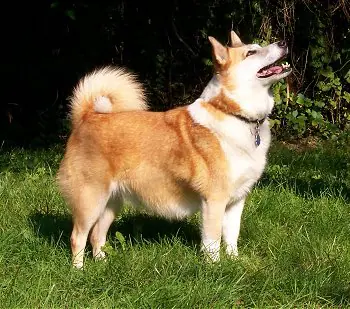Icelandic Sheepdog
Icelandic Sheepdog

Breed Group : HERDING
Origin : Iceland
Average Height : 16" - 18"
Average Weight : 20 - 32 lbs.
Life Span : 14 - 16 years
Photo Courtesy of : National Icelandic Sheepdog Rescue Alliance
-
Size
1 2 3 4 5 6 7 8 9 10 -
Energy
1 2 3 4 5 6 7 8 9 10 -
Intelligence
1 2 3 4 5 6 7 8 9 10 -
Ease of Training
1 2 3 4 5 6 7 8 9 10 -
Hypo-Allergenic
1 2 3 4 5 6 7 8 9 10 -
Shedding
1 2 3 4 5 6 7 8 9 10 -
Good with Kids
1 2 3 4 5 6 7 8 9 10 -
Good with Other Pets
1 2 3 4 5 6 7 8 9 10 -
Guard Dog
1 2 3 4 5 6 7 8 9 10







